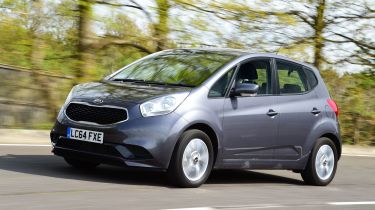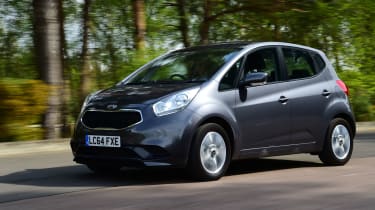Kia Venga (2010-2019) review - Engines, performance and drive
Most at home in the city or relaxed cruising out of town, the Venga doesn’t respond well to pressing-on
With quick, if lifeless, steering and reasonable grip, the Venga is surprisingly agile on twisting back roads.
Longer-travel suspension means there’s a noticeable amount of body roll if you’re a little too energetic with your corner entry speed, and the squidgy steering doesn’t give much feedback.
The Venga is more about relaxed cruising in urban areas than blasting down a country road. Here it makes more sense, with a soft chassis set-up that soaks up cracked roads and rutted tarmac well.
On the motorway, the Venga is refined and offers smooth cruising ability, while even on B-roads it’s comfortable, floating nicely over bumps. It never feels engaging, though, and it’s a shame that the engine lacks any real shove, even if the light five-speed manual gearbox is pleasant to use.
Engines
There’s a wide choice of engines in the Kia Venga, although matters are complicated because different trim levels have different options. Entry-level 1 models come with 1.4-litre petrol or diesel engines, both with 89bhp and a manual gearbox only, while if you go for 2 spec, you also get the option of a 123bhp 1.6-litre petrol engine with an automatic box.
Buyers choosing the top-spec Venga 3 and Venga 4 models can pick from the 123bhp 1.6-litre petrol engine with manual or automatic transmissions, or a 114bhp 1.6-litre CRDi diesel manual – and the latter is the cleanest and most economical model in the range.
In fact, diesel will be the best bet for most buyers, as the 1.4 and 1.6 CRDi engines combine stronger efficiency with decent mid-range performance, and their six-speed manual boxes serve up greater long distance refinement. Petrol 0-60mph times vary from 10.4 seconds (1.6 manual) to 12.4 seconds (1.4 manual), while the diesels do it in 11.0 seconds (1.6 manual) or 13.7 seconds (1.4 manual).




